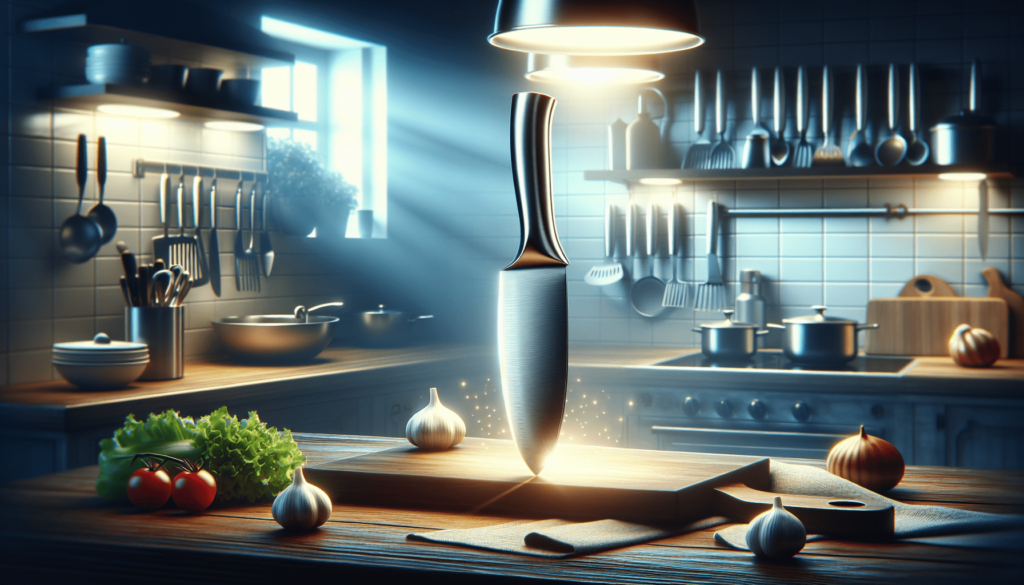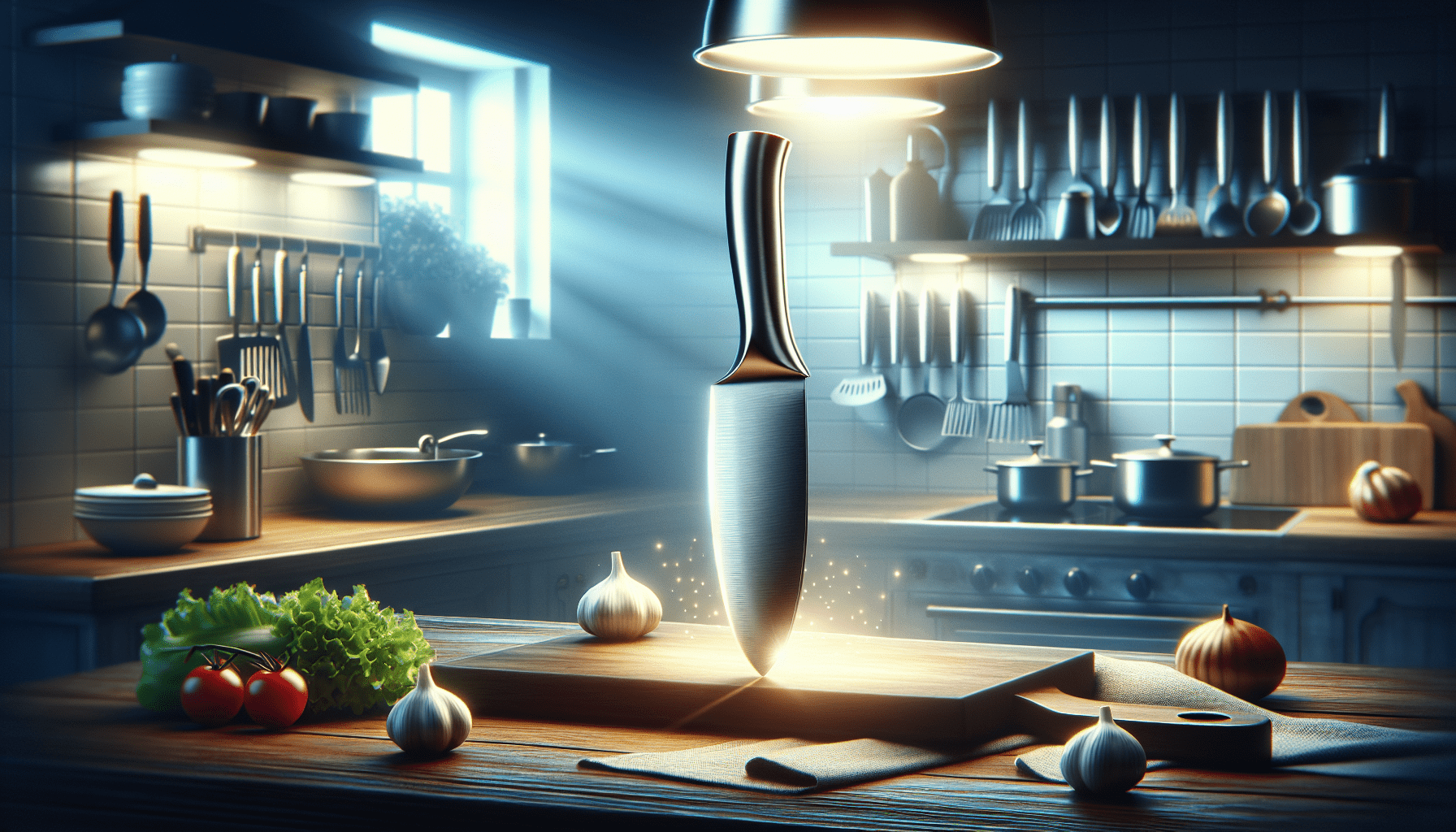When it comes to kitchen knives, the chef knife stands tall as a true culinary workhorse. But is it really an all-purpose knife? Whether you’re a seasoned chef or just a home cook looking to upgrade your knife collection, this question has certainly crossed your mind. In this article, we will explore the versatility of the chef knife, examining its design, functionality, and practicality, to determine if it truly lives up to its reputation as a Jack-of-all-trades in the kitchen. So, get ready to slice and dice through the misconceptions and discover the true capabilities of the chef knife.
Definition of a Chef Knife
A chef knife is the workhorse of the kitchen and is an essential tool for any aspiring or professional chef. This versatile knife has a blade length that typically ranges from 6 to 12 inches, allowing for a wide range of cutting tasks. The shape of a chef knife is characterized by a curved blade that tapers to a sharp point, which makes it suitable for various cutting techniques. The blade is made from high-quality materials such as stainless steel or carbon steel, ensuring durability and precision. The handle design is another important aspect, as it should provide a comfortable grip for extended periods of use.
Versatility of a Chef Knife
One of the key reasons why a chef knife is considered a must-have in the kitchen is its versatility. The design and features of the chef knife make it suitable for a wide range of cutting tasks. Whether you’re chopping and dicing vegetables, slicing and carving meats, or peeling and trimming fruits, a chef knife can handle it all. Its length and shape, combined with the sharpness of the blade, enable efficient and precise cuts, making it an indispensable tool for any cooking enthusiast.

Benefits of Using a Chef Knife
Using a chef knife offers several benefits that enhance your overall cooking experience. One of the primary advantages is its efficiency and time-saving capabilities. The sharp blade and ergonomic design allow you to work quickly and effortlessly, reducing the time spent on cutting and preparing ingredients. Additionally, a chef knife’s versatility allows you to tackle a variety of ingredients with ease. Whether you’re working with meats, vegetables, or fruits, a chef knife can handle them all, eliminating the need for multiple specialized knives. The ergonomic handle design ensures a comfortable grip, preventing fatigue and promoting seamless cutting motions.
Limitations of a Chef Knife
While a chef knife is a versatile tool, it does have its limitations. One of the limitations is its suitability for specific tasks. For example, if you require precise and delicate cuts, a chef knife may not be the best option. Its larger size and weight make it less ideal for intricate work. Furthermore, while a chef knife can handle a wide range of ingredients, it may not be the optimal choice for certain delicate fruits or vegetables that require more specialized knives. Additionally, some individuals may find the size and weight of a chef knife to be cumbersome, especially if they have small hands or prefer lighter tools in the kitchen.

Other Types of Kitchen Knives
While a chef knife is a multipurpose tool, there are other types of kitchen knives that cater to specific cutting tasks. A paring knife, for example, has a smaller blade length and a pointed tip, making it perfect for intricate tasks such as peeling fruits, deveining shrimp, or creating decorative cuts. A bread knife, on the other hand, features a long, serrated blade that effortlessly cuts through crusty bread without crushing it. A santoku knife, originating from Japan, is similar to a chef knife but has a straighter edge and a shorter blade, making it ideal for precise slicing and dicing.
Choosing the Right Knife for the Job
When selecting a knife for a specific task, it’s important to consider the task at hand, the specific culinary techniques required, and personal preferences. If you’re predominantly working with small ingredients or performing delicate tasks, a paring knife may be your best bet. However, for more general tasks that involve a variety of ingredients, a chef knife is a versatile choice. Understanding the culinary techniques you frequently use can also guide your decision. For example, if you often make sushi or perform precise slicing, a santoku knife may be a suitable addition to your kitchen. Personal preference, such as handle comfort and aesthetic appeal, should also be taken into consideration when choosing the right knife for you.
Maintaining and Sharpening a Chef Knife
To ensure the longevity and performance of your chef knife, proper cleaning, storage, and regular sharpening are essential. After each use, clean the knife with mild dish soap and warm water, carefully removing any food residue and drying it thoroughly. Store the knife in a knife block or magnetic strip to protect the blade and prevent accidental cuts. Regular sharpening and honing are crucial to maintain the knife’s sharpness. Honing should be done before each use, while sharpening should be done periodically to remove any dullness. Professional maintenance services are also available for those who prefer to have their knives serviced by experts.
Recommended Brands and Models
Several reputable brands offer high-quality chef knives that are favored by professional chefs and home cooks alike. The Wusthof Classic Chef Knife is a popular choice known for its exceptional balance, sharpness, and durability. The Shun Classic Chef Knife is another highly regarded option that combines traditional Japanese craftsmanship with modern technology. Its high-performance steel blade and ergonomic handle ensure precise and comfortable cutting. For those on a budget, the Victorinox Fibrox Pro Chef Knife offers excellent value for money with its sharpness, durability, and affordable price point.
Price Range and Quality
When it comes to chef knives, price range and quality often go hand in hand. High-end chef knives from renowned brands can range from several hundred to thousands of dollars. These knives are meticulously crafted using top-quality materials and advanced manufacturing techniques, resulting in exceptional performance and longevity. Mid-range options, on the other hand, offer a balance between performance and affordability, making them suitable for both professional and home use. Budget-friendly choices, although more affordable, can still deliver satisfactory performance for everyday kitchen tasks, making them a practical option for novice cooks or those on a tighter budget.
Conclusion
In conclusion, a chef knife is undoubtedly a versatile tool that every home cook should have in their kitchen arsenal. Its length, shape, and sharp blade allow for a variety of cutting tasks, making it a go-to tool for chopping, slicing, and more. However, it’s important to understand the limitations of a chef knife, such as its suitability for specific tasks and the size and weight considerations. By considering these factors, along with personal preferences, you can choose the right knife for each job. Proper maintenance, along with regular sharpening and honing, ensures the longevity and performance of your chef knife. Ultimately, a chef knife is an essential tool that offers efficiency, versatility, and ergonomic design, making it an indispensable companion for your culinary endeavors.
